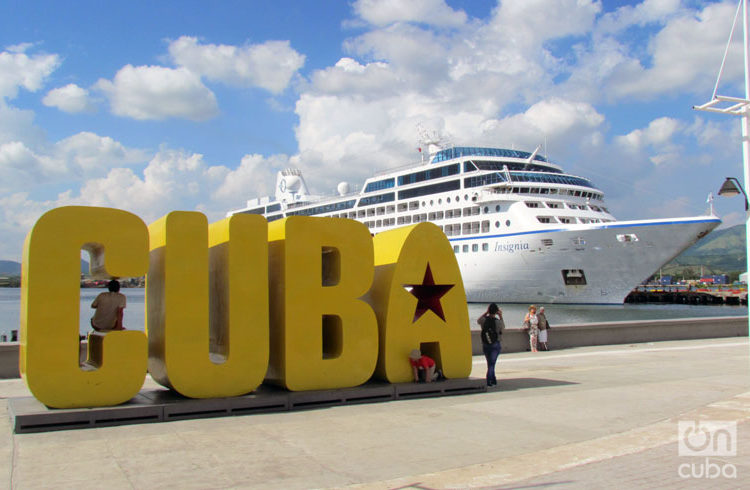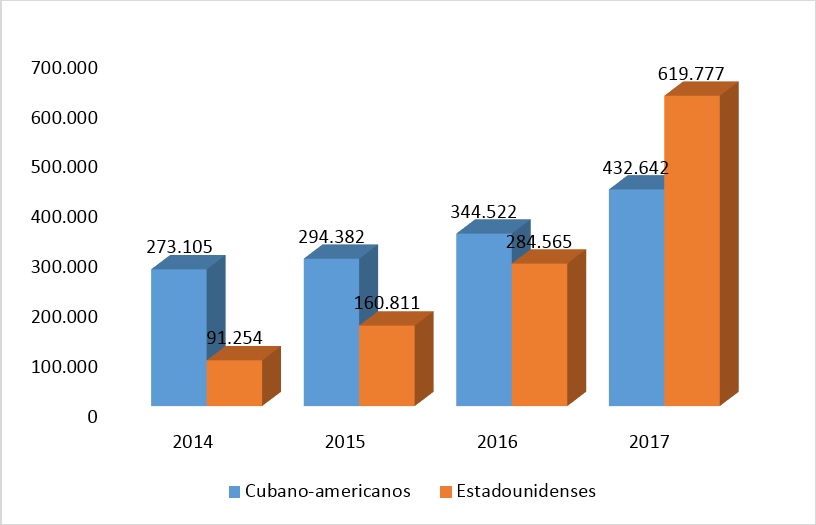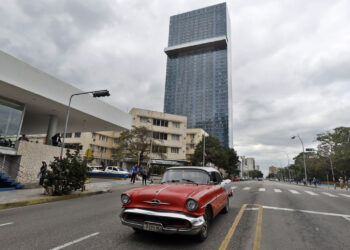The Cuban economy’s locomotive – tourism – is still running, but the number of wagons it has to pull and the speed it has been forced to maintain is concerning.
Last 2017 the island received 4,689,895 international visitors, representing an increase of 16.2% in relation to the previous year. In these results the growth in cruise tourism (251%) should be highlighted as well as that of the arrival of travelers from the United States (67.3%).
According to the principal indicators of the Cuban economy in 2017, reported to the National Assembly of People’s Power last December, the Cuban GDP grew 1.6% and the most dynamic sector was tourism (4.4%). According to that report the incomes from tourism grew by 10.5%.
International tourism forms part of the export of services, and increased from 2.503 billion dollars in 2011 to 3.069 billion in 2016 (a 22% growth in five years). However, the estimate of incomes for the total export of services was reduced during these years by 959 billion dollars, for a 9.5% drop, which implies that the increases in tourism did not compensate for the decrease in incomes for the export of skilled workforce. Its weight in the total of export of goods and services increased from 14% in 2011 to 19% in 2015. Tourism’s locomotive has a big load to pull when the other engines are not working at full speed.
While tourism was the sector with the biggest growth in 2017, its efficiency was not that lucky, since while visitors increased by 16.5%, incomes grew only 10.5%, which reflects a decrease in the income per tourist, which went down from 760 dollars in 2016 to 722 in 2017. In Havana, the arrival of international visitors increased from 2.1 to 2.6 million, but the tourist-day relation decreased from 3.2 to 3 million from 2016 to 2017. In the same way, the lineal room occupancy in the hotels reached 60.7% in 2016, the last available data. The hotel occupancy rate in 2016 of two important competitors was 80.4% in Cancun and 78.1% in the Dominican Republic.
Cruise tourism experienced the greatest growth in 2017 compared to 2016: a total of 437,429 tourists arrived on cruise ships, not counting the crew members, more than threefold the number for 2016 and 15 fold for 2015, after this year the U.S. government authorized the visit to Cuba of ships coming from that country. Last year registered 706 cruise stopovers in eight Cuban ports, especially Havana, where 395,588 passengers arrived, many of them to continue their journey to stopover ports in Cuba like Cienfuegos, Santiago de Cuba and Casilda (Trinidad) and to others in the Caribbean.
Cuba has become one of the Caribbean’s principal cruise destinations. As a sign of this, the three principal U.S. cruise companies – Carnival Corporation, Royal Caribbean and Norwegian Cruises Lines – announced their intention of making 286 stopovers in Cuban ports until 2019, which would represent more than 623 billion dollars for the shipping companies and the arrival of some 455,000 passengers to the largest of the Caribbean islands.
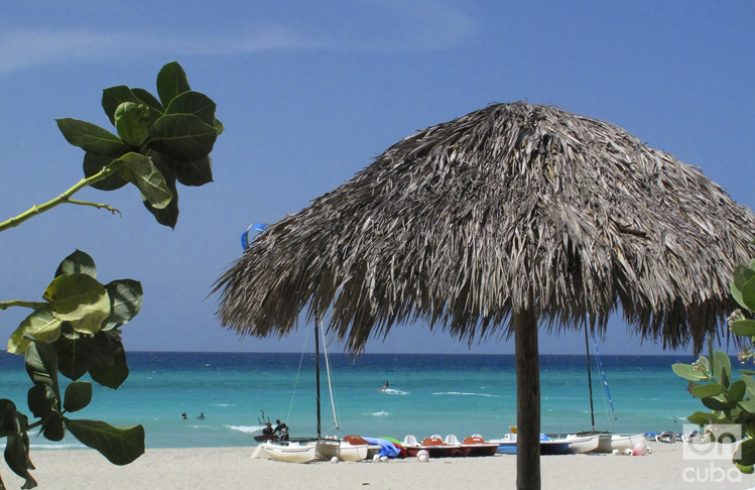
But, what does cruise tourism represent in economic benefits for the destination countries compared to the stays? The Caribbean Tourism Organization (CTO) estimated that in early 2000 each cruise passenger generated an average of $17 in taxes per visit ($9 in taxes per passenger and some $8 in sales taxes), while the tourist stays in the country generated an average of $133 in taxes – which means that the governments collected eight times more taxes per each visitor’s stay than for each cruise passenger. In terms of spending by visitor, in 2015 the CTO estimated that 28.7 million tourist stays and 24.4 million cruise passengers visited the 32 Caribbean countries, and generated a total of $30 billion in spending per land visitors. Of this, only 8%, or $2.4 million, was spent by cruise passengers, and 92%, or $27.6 billion for tourist stays. Therefore, while the number of cruise passenger arrivals and of visitor stays are more or less similar in the Caribbean, the tourist stays generated 11.5 more times per person than the cruise passengers. Despite the fact that the analogous statistics are not available for Cuba, it is to be supposed that the growth in cruise passengers isn’t going to represent a relevant increase for the country’s incomes.
With the opening of relations between Cuba and the United States in December 2014, and up to June 2017 in which the new president decided to reverse it, the arrival of visitors from the United States witnessed an important leap. Statistics distinguish between the Cuban Americans who enter the country with Cuban passport, and the “pure” Americans – who do so with passport from that country. As can be seen in the diagram below, the arrival of Cuban Americans started off with more than 273,000 – and greatly grew but gradually: 8% in 2015; 17% in 2016; and 26% in 2017. But the number of American tourists shot up, from only 91,000 in 2014 to almost 620,000 in 2017: an almost sevenfold increase. To make it clear, not all Americans of Cuban origin enter the country with Cuban passport. Those born in the United States do so with that passport, even though they come for family visits, and the statistics include the number of entries, not of persons, which is why those travelers who come to Cuba several times a year are counted every time.
Entry to Cuba of U.S. visitors, 2014, 2015 and 2017
Cubanoamericanos = Cuban Americans
Estadounidenses = Americans
However, the honeymoon of U.S. tourism in Cuba is in danger. On the one hand, Canadian tourism, the first among the issuing countries to Cuba with more than a million annual visitors, has registered a 13% decrease since 2015. The causes are not clear, but the quality-price competition of other countries like the Dominican Republic and Cancun, can be the cause.
But on the other hand, the president in turn in the United States, in alliance with the anti-Cuban legislators from Florida, has taken it upon himself to roll back the policy of understanding with Cuba outlined by his predecessor, precisely focusing on reducing tourism to the island. Since June 2017 Trump has issued a series of restrictions and policy changes that include:
• new regulations to restrict self-directed individual trips on people-to-people exchanges,
• prohibition (for all U.S. nationals) to make any financial transaction with a group of 180 entities linked to Cuban defense, intelligence and security services,
• forced withdrawal of the majority of the officials of the U.S. embassy in Havana and, inversely, from the Cuban embassy in Washington D.C.,
• the Travel Warning issued by the Department of State in September 2017 and
• the new system of Travel Warnings of the Department of State presented in January 2018, which classifies Cuba as Level 3: “reconsider traveling…due to the attacks on health against workers of the U.S. Embassy in Havana.”
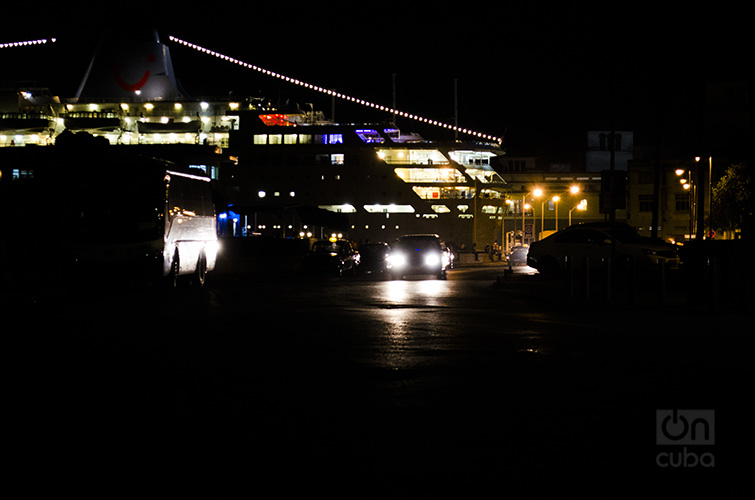
In a poll by the Center for Responsible Travel (CREST), 42 U.S. tour operators which took more than 17,000 persons to Cuba in 2017 reported that none of them reported symptoms of a sickness similar to those experienced by the Embassy staff. However, the poll revealed that 85% of the surveyed companies have seen a major drop in their bookings, or an increase in their cancelations in the second half of 2017 compared to the first half; 66% have experienced cancelations of their travel partners (universities, museums, professional associations, etc.), and 85% forecast less people-to-people travel reservations in 2018 than in 2017. Informal conversations with private landlords or landladies, owners of restaurants and bars, craftspeople, taxi drivers and coachmen from Havana, who last year had a numerous American clientele, confirm that their businesses have suffered significantly.
Despite President Trump’s June 2017 announcement that he would roll back several of Obama’s tourist opening measures, he specifically excluded cruise tourism, nevertheless he sent a signal that the complete lifting of the U.S. blockade on Cuba remained distant.
For Cuba the vitality of the tourist industry is not just an economic matter, it is also a political priority. Part of the image that the Cuban economy is advancing despite the difficulties depends on it, a key message for foreign suppliers, financiers and investors. That’s why the insistence in Cuba that tourism is growing…and continues growing.
The short “spring” of the normalization of relations between Cuba and the United States initiated by Barack Obama has become a “winter of dissatisfaction” under the Trump government. Now more than ever, the words of Eusebio Leal Spengler, City of Havana Historian, resound: each time a U.S. cruise ship enters the bay of Havana and hundreds of average Americans pour into the beautiful city and mix with its inhabitants, “we are breaking the [U.S. economic and financial] blockade.

